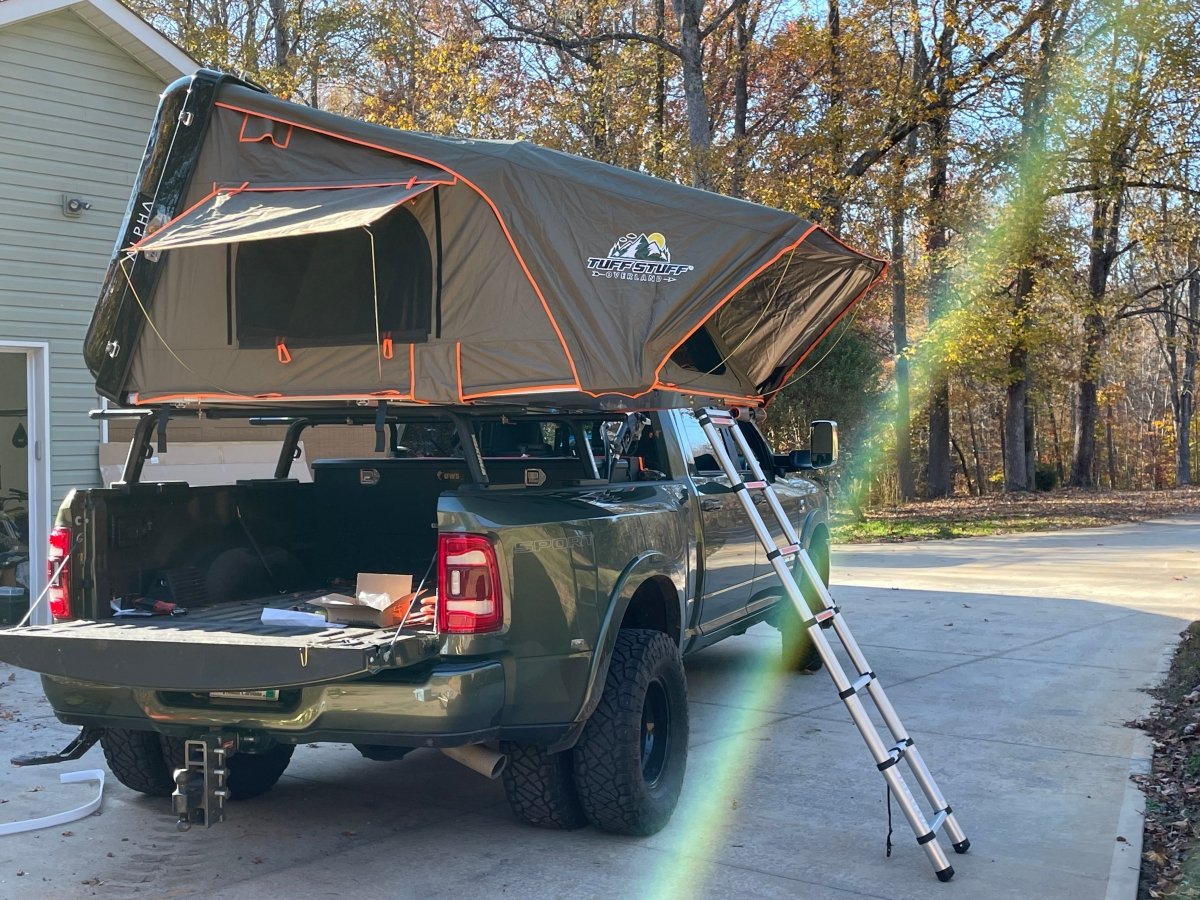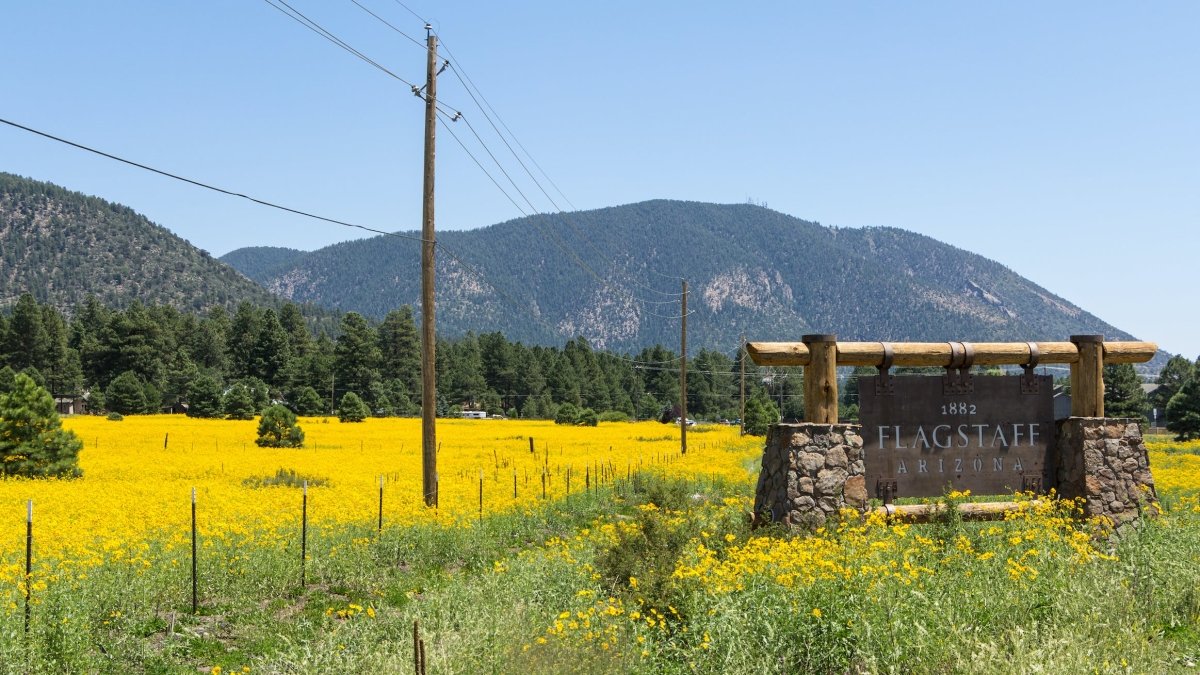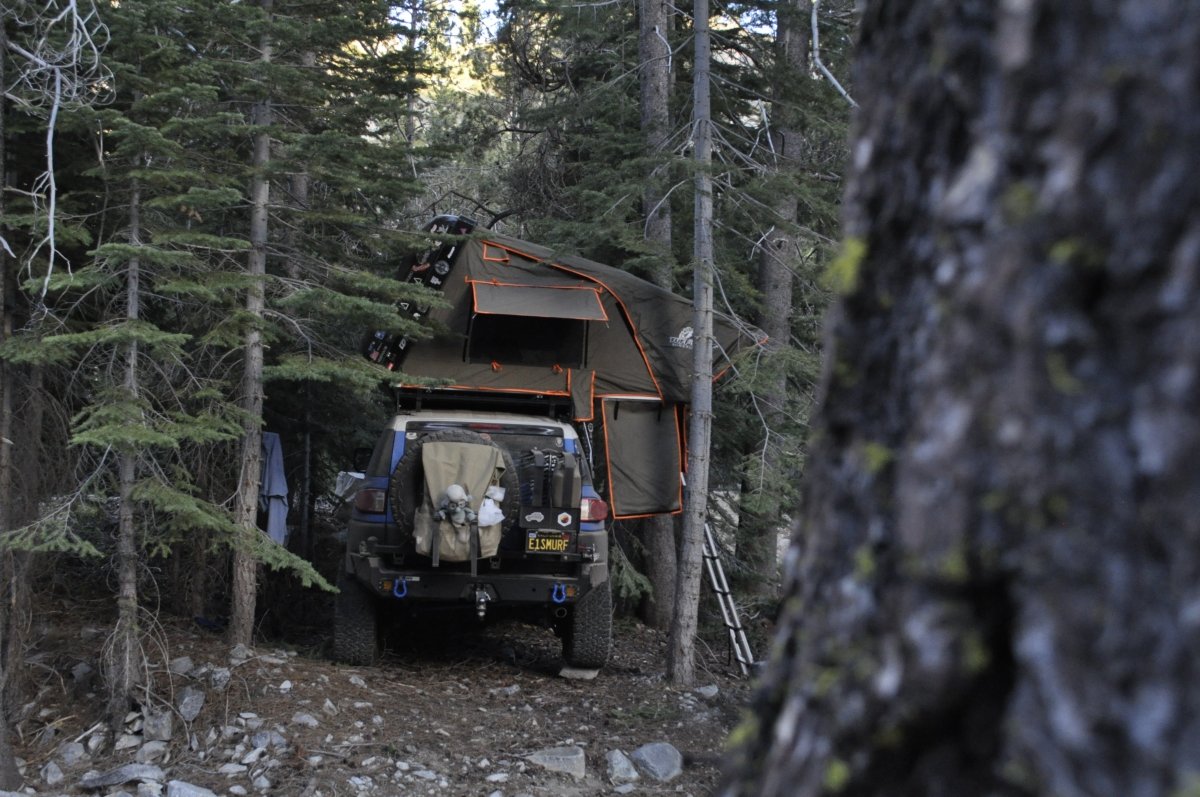As a new member of the overlanding scene, you have a lot of things to understand and get a grip on before your first ever overlanding trip.
One of these is knowing what overlanding vehicles are. After all, an overlanding trip is not an overlanding trip if you don't have a vehicle dedicated to your expedition.
But, what exactly are overland vehicles? More importantly, how do you know one when you see it?
For many people, an overlanding vehicle is any sturdy 4WD that is strong enough to handle the rough terrains you will be traveling on your overlanding trip. However, it is important to know that not just any hardy vehicle counts as an overlanding vehicle.
To help you understand what overlanding vehicles are, we have compiled all the information you need to know about these expedition-type machinery.
What Is Overlanding?
To clearly understand what overlanding vehicles are, you first need to understand what overlanding is.
Although many definitions try to explain what overlanding truly entails, the most accepted definition is, ‘Overlanding Is a self-reliant journey to remote locations with the purpose of enjoying every second of the journey’.
Put simply, overlanding is an expedition-type activity that is a combination of remote traveling, off-roading, and of course, camping.
Although it has been around for over a century, overlanding is still considered a relatively new activity similar to other leisurely and outdoorsy activities like off-roading and camping. However, overlanding has distinct features that set it aside from other outdoor activities. These features are
- Purpose
- Duration
- Medium
The purpose of an overlanding trip is undoubtedly the crucial differentiating factor from other outdoor activities. When you visualize overlanding, it is easy to simply think of a nature-lover traveling through on-road and off-road terrains to reach a destination. However, this does not encapsulate people's primary purpose in going overlanding.
When people go overlanding, they do it for the satisfaction they derive from the entire journey and not to reach a particular destination on their map. The journey from start to finish and the experiences they encounter as they explore different terrains in different locations is the sole purpose anyone decides to go on overlanding trips.
In other cases, take camping, for example, the sole purpose is to arrive at a particular location where they will then begin the planned and scheduled camping activities. While the journey as they travel to the campsite location is undoubtedly fascinating, it is not the sole origin of enjoyment.
Although the purpose of overloading might sound similar to off-roading, they are on different ends of the spectrum. Where overlanders derive satisfaction from the adventure of their journey, whether it be on-road or off-road. Conversely, off-roaders go off-roading mainly for the challenge of traveling on uneven terrain.
To an off-roader, the roads are a challenge to be conquered, but to an overlander, the roads and natural scenery encountered are an adventure. With overlanding, the activity is all about the journey and not the destination.
Another factor that sets overlanding apart from other activities is the duration of the activity.
Whereas many camping activities do not exceed a few days or weeks, overlanding is often done for an extended period which is anything from a few weeks to a few months or years. In this period, the overlander will not have any permanent setup as they take their time to explore various locations and terrains within a country and often travel to two or more countries.
It is important to note that throughout the duration of the overland trip, from start to finish, the overlander is responsible for their survival.
Overlanding is a self-reliant trip, something that many forms of camping (excluding dispersed camping, perhaps) do not involve. When you choose to go overlanding, you are not privy to luxuries like camping hookups and whatnot. Whatever luxury you have is arranged by you before your trip and fitted into your live-in area, which is your vehicle.
Speaking of vehicles, this brings us to the medium of an overland trip.
Overlanding is achieved using mechanized off-road capable vehicles to reach the remote destinations an overlander plans to explore. This is important because, on an overlanding journey, you will encounter challenging terrains that require sturdy vehicles that are stronger than the average city cars.
Since overlanding is a high-risk activity that involves traveling remotely and is challenging for an extended period during which you are charged with sustaining yourself, it only makes sense to use a vehicle strong enough to support your journey and comfortable enough to provide the comfort you need during your stay.
However, this doesn’t quite explain what overlanding vehicles are. So, what exactly makes an overlanding vehicle an overlanding vehicle?

What Is An Overlanding Vehicle?
At its core, an overlanding vehicle is any vehicle that will facilitate your overlanding trip. It is mainly defined as a mechanized off-road capable vehicle ranging from bicycles to vans and trucks.
Part of the appeal of going overlanding is the challenge of the different natural landscapes, terrains, and weather you will encounter on your journey. Due to this factor, an overlanding vehicle is considered any vehicle that will have no problem handling the different terrains, landscapes, and weather.
However, that is not all.
Although overlanding vehicles are considered off-road capable vehicles, they are not necessarily the exact vehicle used by off-roaders. This can be very confusing because these vehicles share similar functions.
So, what exactly sets them apart?
Overlanding vehicles are not only designed to handle whatever terrain obstacles and challenges you encounter but also to offer comfort for the duration of your stay.
As an overlander engaging in vehicle-based road travel for weeks, months, or years, you do not have the luxury of lodging in hotels at every stop or even getting a private campsite that provides all the hookups that you will need.
Instead, your designated living quarters are your vehicle, which houses your tents, food, and other essential overlanding gears. Put simply, your overlanding vehicle is not only machinery designed to be tough but also one that is spacious enough to house the necessary overland technical and survival kits.
Your overlanding vehicle is not only a vessel or medium for travel but also a place that holds every item you will need for subsequent weeks, months, or years.
This is probably the most significant difference between an off-road and overlanding vehicle.
Overlanding vehicles are designed to hold everything from portable generators to gas, cooking utensils, food, drinks, vehicle kits, and other personal effects. Sometimes, overlanding vehicles even come in the form of RVs as temporary housing for the duration of a person’s overlanding adventure.
On the other hand, off-road vehicles are designed with only rugged terrain capabilities in mind. They are not built to support or provide accommodation, cooking, and other essential survival needs. This is because off-road vehicles are best suited for extreme off-road terrain, and any additional load on the vehicle will slow it down and impede its off-road capabilities.
Overlanding vehicles balance the need for off-roading abilities and living space to support self-reliance. This is why they are usually outfitted or customized to offer the comfort that off-road vehicles are not built to offer.
It is also important to note that while overlanding vehicles are built to have off-road capabilities, an overlander is not strictly mandated to travel on off-road terrains. Since the journey focuses on a self-reliant adventure through different locations, you can map your journey through paved and medium-challenging roads.
Overall, although overlanding vehicles are equipped to be rigs, they are equally designed to help you carry all the equipment you need on your self-reliant journey. As an overlander, your vehicle is simply a means to an end to your adventure.
Features of An Overlanding Vehicle
Knowing what an overlanding vehicle is is one thing, and knowing what makes an overlanding vehicle an overlanding vehicle is another. While the former is a significant first step, the latter is the cherry on top of familiarizing yourself with overlanding and the best vehicles for successful overlanding journeys.
Overlanding vehicles are primarily defined as mechanized transport vessels. When you visualize vehicles off this definition, you undoubtedly envision fancy 4WDs with state-of-the-art features that will probably put a hole in your wallet.
However, this is not true. An overlanding vehicle can be both practical and affordable. You simply need to know what features to look out for.
Speaking of features, what are the characteristics of an overlanding vehicle that sets it apart from other overlanding vehicles? What should you look out for when buying an overlanding car?
1. Road Success/Capability
This is a no-brainer. A vehicle is not considered an overlanding vehicle without the necessary off-road features to ensure a successful and hitch-free overlanding trip. These off-road capabilities are essential to ensure that you experience little to no mobility setbacks on the challenging terrains usually traveled on overlanding trips.
These include:
- High ground clearance: The last thing you need is to have your overlanding vehicle get stuck on high obstacles. This is why you need a car with high clearance. Clearance is measured as the distance from the lowest-hanging part of the vehicle to the ground. Since higher clearance means you can easily clear obstacles like rocks without severe damage to your car, you should always opt for a vehicle with high clearance of nothing less than eight inches.
- Great horsepower and torque: An overlanding vehicle needs sufficient horsepower for speed and torque for turning and powering up steep hills. Speed is not a necessary factor while overlanding (since the purpose of the activity is to enjoy the trip), but a high low-end torque makes all the difference in an overlanding vehicle.
- Superb traction: a good overlanding vehicle has excellent traction control to prevent slippage on most terrains. This makes it possible to accelerate safely through sand, mud, and gravel without veering off into an accident, especially on slippery terrains.
- Approach and departure angle: The approach angle is the angle from the forepart of an overlanding vehicle to the point where the front tires touch the ground. An overlanding vehicle often has a great approach angle (of more than degrees) to make it easier to climb hills. The departure angle or angle of departure, on the other hand, is the angle from the furthest rear part of your vehicle to the point the tires touch the ground. An excellent departure angle (in the higher 20s and above range) ensures you can easily descend steep topography.
- Center of gravity: Defined as the average point at which your vehicle carries its mass, the center of gravity plays a vital role in vehicular functions like acceleration, turning, and braking. Ultimately, it is the focal point in your vehicle where all the weight and forces are focused. The lower the center of gravity in your overlanding vehicle, the more stable it is. Although it can be pretty tricky to calculate the center of gravity of a vehicle, you can provide an estimation by measuring the distance from the centerline of the engine’s camshaft to the ground.
2. Comfort
Capability is essential in overlanding vehicles, but comfort is just as vital. If you are going to be on the road for weeks or months, you need a capable vehicle to keep you comfortable on the go. This will help you enjoy your overlanding adventure better and focus on making memories.
- Ensure the seats are comfortable
- Opt for a roomy vehicle. You need enough space to fit yourself and all essential overland gear or kits without feeling cramped up.
- Enough head and leg room
- Handy features like USB ports and other flexible customizations
3. Great Tire Quality
It is essential to choose all-terrain tires that will keep you out of sticky situations. However, these tires should also be of excellent quality. They should have great traction, be roadworthy, and be strong enough that they do not have to be changed every few miles.
4. Reliability
The last thing you need on your overlanding trip is a vehicle that will often break down. Your overlanding vehicle is your means of having hitch-free transport and exploration. To ensure you get a vehicle with superb reliability, it is best to ask questions.
Read reviews, talk to the seller, visit the manufacturer’s website, and get a second opinion to spot any mechanical problems a vehicle might have before purchasing it. After all, a vehicle's reputation is a great way to guess its reliability.
5. Part Availability
Repair is inevitable. No matter how careful you are, you will need to get a certain vehicle part repaired or replaced. When choosing an overlanding vehicle, it is essential to choose one with easy-to-get replacement parts in your region.

Is Every Overlanding Vehicle A 4WD?
No. A vehicle doesn’t have to have a 4WD system before it is considered an overlanding vehicle. 2WD vehicles are just as sturdy and practical as any 4WD vehicle.
As long as other features and properties are of top-tier quality with great functions and are sustainable, you shouldn’t have any problem using a 2WD overlanding vehicle. However, it is essential to note that 4WD vehicles offer more driving flexibility and maneuverability that upgrades any overlapping trip.
Should You Buy A New Overlanding Vehicle?
There is a certain level of confidence that comes in investing in new and undoubtedly high-quality overlanding vehicles. However, you do not have to break your bank to go overlanding. Sometimes, used vehicles work just fine.
If you are interested in affordable overlanding vehicles with off-road capabilities, check out our list of ten best cheap overlanding vehicles. With these vehicles, you can enjoy quality overlanding trips on a budget.
A Vehicle Fit For Overlanders
Overlanding vehicles are mechanized vehicles with off-road capabilities that make it possible to have a smooth overlanding exploration. They can be anything from Cruisers to Land Rovers built to withstand easy to punishing road conditions and a long time on the road.
A good overlanding vehicle isn't always the largest mechanized vehicle on the automobile market. Instead, a good overlanding vehicle should be a strong, functional vessel that acts as a means to enjoy an excellent overlanding adventure.
At the end of the day, what matters is you have a fully-functional vehicle with all the necessary features.



